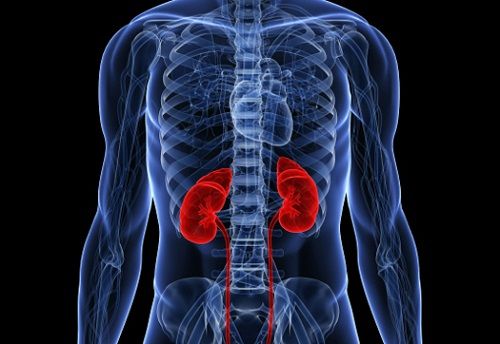Kidney tumors can be benign or malignant although benign forms represent only 15%. In benign forms we consider lipomas, angiomyelipoma, cistoadenoma, adenoma, oncocytoma, endometrioma, expression of renal endometriosis And benign papilloma. Among adult malignant tumors, the most common is renal adenocarcinoma (first known as hypernefroma or Grawitz's tumor). Also urothelial cancer is important.
SYMPTOMS:
Unfortunately, most kidney cancers do not show signs of it for a long time, and are often discovered during a RENAL ECOGRAPHY or a TAC Examination or an ADDOMINAL MAGNETIC RESONANCE.
These are the main examinations to be made in the event of a kidney tumor being suspected. Sometimes a kidney cancer occurs with the presence of blood in the urine (hematuria) or with a lumbar pain.
In the case of suspected tumor, no kidney biopsy is performed for the fear of spreading neoplastic cells. The aforementioned diagnostic techniques are now extremely precise in suspicion. In this case, it is best not to hesitate and undergo surgery.
SURGICAL TECHNIQUES:
The surgical interventions are: NEFRECTOMIA or PARZIAL RESEARCH OF RENE. These interventions can be performed by LAPAROTOMICA (with a surgical cut) or via LAPAROSCOPICA (mini injection molding technique with mini-cuts) which can also be performed via ROBOTICA
LAPAROTOMIC NEFRECTOMIA:
It is currently less used, in recent years I have performed few, preferring the mini-invasive laparoscopic route. It consists in removing the kidney with its adipose capsule, a urethra tract, and possibly contiguous lymph nodes through an incision that is generally anterior, from the sternum below the navel or pubic.
Another street used more often by urologists than not by general surgeons is the lombotomic way, that is, an incision along the lower edge of the last rib. It is isolated from the artery (which brings blood to the kidney) and the vein (from which the kidney's blood comes out), bind and dissect.
At this point the kidney is isolated with its capsule and it removes "en block" the kidney, its capsulam and the ureter. After any lymph nodes are removed.
I only get this access when the tumor has formed a thrombus in the vein vein extended to the vein vein that requires more vascular control in laparoscopy.
The hospitalization is 5-7 days, the recovery is usually about three weeks.
LAPASCOPIC NEFRECTOMY and PARTIAL LAPASCOPY NEFRECTOMY.
It consists in the removal of a part of the kidney, usually one of the upper or lower poles, through the same access routes as described above. The technique consists in preparing the artery that is temporarily closed to allow the part of the kidney to be cut off. Then the kidney is sutured and the artery opens again.
It is performed for early kidney tumors or for those with benign characteristics.
The shelter is 5-7 days, the time to remove drainage.
Recovery is like for nephrectomy.
LAPAROSCOPIC NEFRECTOMY and LAPAROSCOPIC PARAGRAPHIC NEFRECTOMY
It consists in the removal of the whole kidney or part of it via abdominal shortening of 5 to 10 mm, with an intervention that follows in great lines the traditional one.
The operating range is relaxed and displayed through a camera that lights (laparoscopic optic) on a monitor, TV type.
It is a very delicate work, respecting the structures in a very precise way, since all the pictures are very enlarged.
When the kidney or part of it has been completely removed, it is housed in a bag and extracted through a so-called mini-surgery of 5-10 cm depending on the size of the kidney.
The stay is about three days and the recovery is faster than laparotomic surgery.
POSTOPERATIVE INSTRUCTIONS AFTER INTERVENTION OF NEFRECOMIA OR DRAWING THE ROSES FOR LAPAROSCOPIC STEPS by Dr. Carlo Farina
The intervention was performed about 3-5 days ago, the drainage tube was extracted and now we can consider that the major worries for intervention have been overcome. Post-operative pains are currently mild and controllable through a light pain relief therapy that will allow you to have a regular life.
She is normally urinating as the other kidney works twice before.
Within a week, however, it will have to repeat some of the sngue controls: "Emocromo, Azotemia, Creatinine, Sodium, Potassium, Calcium, Glycemia, Triglyceridemia, Urine Examination, Creatininemian Clearance (will have to collect urine for 24 hours following the His laboratory) ".
The nutrition will be light and healthy, considering that switching from light and half-meal meals to normal meals must take place in about ten to fifteen days. Initially, then take some vegetables, pastas, and cooked fruits, then go to pasta, white meat and fresh fish and fresh fruit and then everything else.
Avoid heavy foods for digestion like fried, cooked oils. It will have to avoid excess fat, can take carbohydrates (can eat pasta and bread) and proteins (favor white meats, fish and legumes).
